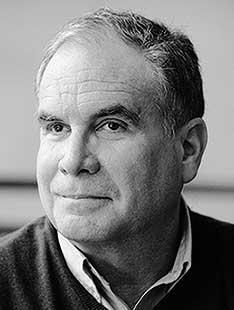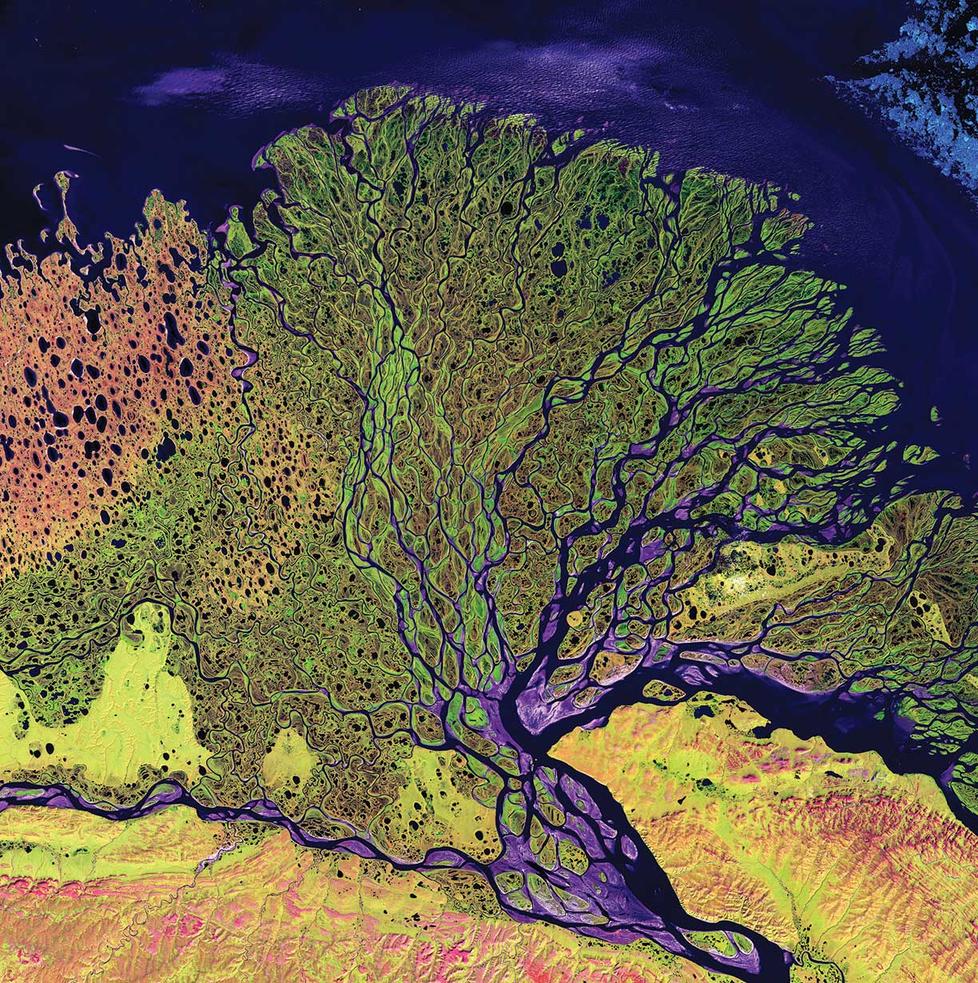Essay: ‘There Is, in Short, No Planet B’
‘So how do we face crises and challenges in an increasingly complex world?’
What to do with all that milk? This is the question that thousands of dairy farmers asked themselves as COVID shut down the demand from some of their biggest customers. School districts were not buying, nor were large consumers such as Starbucks. For already stressed farms, the crisis was existential. In New Jersey, small dairy farmers transformed their supply chains and began to sell directly to local consumers and restaurants. The transition was not easy, but for many it meant the difference between going broke and continuing in business.

Few PAW readers have had to deal with tens of thousands of gallons of surplus milk, but we have all had to make adjustments in the way we live and do business. If 2020 has taught us anything, it is that we need to be ready for the unexpected. Wishing things will remain as they are is a common human trait, but it can also be a very dangerous tendency. This is especially true in our newly globally connected world, where taking care of your own business is not enough — we also depend on many others to take care of theirs. We live in a world where we have to worry not only about our own house catching fire, and our neighbor’s house — but even a burning house thousands of miles away. Decisions made by people on other continents can affect the price of your home; choices made by total strangers will set the odds of whether you will catch a disease; and a seemingly small disruption in a warehouse can reduce the availability of toilet paper.
So how do we face crises and challenges in an increasingly complex world? The concept of resilience has migrated from engineering and ecology into all disciplines. At its core, resilience refers to the capacity of any system — a human body, a city, a tropical forest, a building — to recover from failures and/or continue functioning despite disruptions or shocks. That is, no matter how well something works, we also have to ask how well it could bounce back from or withstand challenges or unexpected changes.
Over the past few years, several faculty, representing a broad array of disciplines, have been working on the theoretical and practical aspects of resilience. Professors in ecology and evolutionary biology and partner disciplines have been studying how different ecological systems and coupled ecological-socioeconomic systems might respond to change, including the possibility of discontinuous and possibly damaging transformations.
Engineers have been working on designing infrastructure and machines that not only work better, but also can function in a variety of environments. Faculty in the School of Public and International Affairs have researched how globalization and interdependency have changed how societies need to govern. The University is now part of a network of institutions around the world studying the challenges we face in the 21st century and how systems can be made more resilient to deal with them. Several faculty members are collaborating with the Stockholm Resilience Centre, Humboldt University, the Potsdam Institute for Climate Impact Research, and the University of Cambridge on resilience and risk in a range of fields.
For a fisheries biologist, resilience may mean the ability to maintain the size, quality, and variety of the annual harvest. A resilient marine system would be able to continue providing some rough equivalence of fish or return to normal after a significant drop. A historian of late antiquity might define the resilience of parts of the Roman Empire by the resources available and the capacity of surviving institutions, or how much a region’s lifestyle could be maintained during invasions and chaos. For engineers, resilience is the opposite of vulnerability, or how well a system is able to resist or recover from an extreme event.
Resilience is a combination of two general qualities: resistance or ability to remain the same; and flexibility, or the ability to change enough to survive even if in a different form. An example of the former would be building a dam to prevent flooding; that of the latter, the provision of boats in the case of a breach. From a military perspective, resilience could be either the ability to resist attack or changing and evolving in response to an assault. So, one can build walls and fortifications or hold back reserves to be sent to weak areas. With an infectious disease, we could focus on immunization or the provision of adequate health care. Finally, individual organisms, from bacteria to humans, can attempt to avoid crises altogether or come up with better mechanisms to deal with them when they occur.
The central difference between these two aspects of resilience might be best understood as the prevention of a crisis and the ability to bounce back from one. In regulatory terms, we can either try to prevent failures in our physical, infrastructural, economic, or epidemiological systems, or we can design triage protocols to mitigate the damage.
Why not do both? The two qualities of resistance and flexibility are complementary, but also represent a series of tradeoffs; it helps to be strong and supple, but building resilience requires resources and you cannot maximize both. The ideal system design or evolution will weigh, balance, and combine these two qualities along some “golden mean” depending on preferences and contexts. It is in these tradeoffs and balances that we find the most challenging policy dilemmas.
When designing and operating a system, we must be aware of the costs and benefits involved; we need to choose how to navigate among risks. Most importantly (and this is often the most difficult step), one must determine the goals of resilience. The system may be resilient for different people, at different times, and at different levels. For example, faced with climate disaster, we can emphasize short- versus long-term consequences, privilege the status of the entire globe or just parts of it, and choose among a discomforting array of disasters. These choices have to occur at several levels: technological (keeping the system going), organizational (managing the system), and social and economic (who pays and how much).
Even if we could agree on the definition and distribution of benefits, there are human traits that can make the creation of resilience difficult. First, we don’t know everything — and even if we did, we could not process how all things play a role, or have enough time to consider everything necessary to find the perfect solution. Second, we have a very difficult time predicting and planning for the future as events become more distant or uncertain. Third, we are very shortsighted in that we focus on present rather than future needs and on individual needs rather than the good of the collective. Finally, we exhibit status-quo bias: a preference for things to stay the same even if alternatives might be better.
Consider the dilemmas facing policymakers who must confront the next epidemiological or financial crises. What percentage of people, banks, or IT systems can be infected before hitting a nonreversible, disastrous tipping point? How broad, deep, and long a quarantine? Who pays for the resulting costs of adjustment, and how do we determine the appropriate price and the distribution of costs and benefits? In the case of COVID, for example, our global supply chains and our health systems have been fairly resilient, but at the cost of thousands of lives of those on the front lines. The stock market has remained high, but unemployment and poverty have skyrocketed.
The contemporary world has made it much more important that we have responses to systemic challenges. Living in the age of efficiency, we continuously strive to make things faster, better, and cheaper. This makes perfect sense unless you realize that every improvement, every increase in the number of interactions, every adaptation to the current situation means an increase in the fragility of systems to rapid or unexpected change. So, for example, we continuously try to reduce redundancy while increasing the economies of scale. But efficiency gains under some conditions may be counterproductive in others. Our global agricultural system produces more food than ever before; but monoculture, homogenization of seeds, dependence on chemicals, and reliance on vast transport networks make it ever harder to guarantee food security. Relying on local food may be more boring, but it may also be both more sustainable and safer.
We are dependent on each other and can no longer ignore or run away from problems that have the potential for broad impact in an interconnected world. There is, in short, no Planet B.
If there is a positive side to the COVID pandemic as a learning opportunity, it’s that it may serve as a warning of how the best plans can fail and that “unknown unknowns” are the price we pay for a possible better future. Designing our lives to be resilient may come at a price, but the alternative is too dark to ponder.
Princeton professors Simon Levin, Daniel Rubenstein, and Elke Weber contributed to this essay.













1 Response
John H. Brown ’52 *59
4 Years AgoIndustrial Agriculture: Unsustainable and Ruinous
The power of industrial agriculture in the U.S. and in other urbanized nations is not only driving the degradation of the soil but controlling the politics of agriculture and causing havoc in rural society. Farmlands are increasingly depopulated, family farms (dairies in particular) are going bankrupt, suicides are up, farming is increasingly a part-time occupation (especially in chicken farms under contract to giant corporations), dependency on heavy chemical inputs and proprietary seeds is ever increasing with ruinous effects on soil health, pollinators, and the quality of product — and all this is defended in the halls of power as essential for food security. Industrial agriculture has compromised all the supposedly green certifications by its political power: Certified organic does not mean real organic, cage free does not mean real freedom, grass-fed does not mean real access to pasture, and so forth.
The soil-regenerating, high-productivity, social and economic alternative has been resoundingly demonstrated in countless instances worldwide. True sustainability and the capacity to feed the world and control carbon emissions, and especially to control malnutrition and susceptibility to adverse environmental conditions in developing countries is available if industrial agriculture is kept at bay, sternly regulated, insurance for crop failure eliminated wherever truly regenerative practices are not followed. The losers in such a case will be the mega-corporations, and the winners will be the people of the world now and in the future.
But in the halls of power, industrial agriculture reigns and regenerative agroecology is never mentioned. The Bill Gates of the world will only hear of profit-making for the giant corporations, with superficial greenwashing similar to that of the fossil fuel companies and their transition from power to plastics. There is hope for the future habitability of the earth only if the new administration is insightful and determined enough, and resourceful in shifting toward small-scale, real organic, year-around, diversified productivity farmed by a new generation of young recruits who pride themselves in learning the fabulous intricacy of the natural systems that are suppressed by industrial monoculture. Cooperatives can achieve scale, the supply chain can be modified to a more local one — the pandemic has shown how this can be done. Consumer preference is shifting toward organic products and people are reaping the benefits of better health. We all have a vital interest in the health of our rural lands, so we need to think big and not shrink from the magnitude of the change that is required.